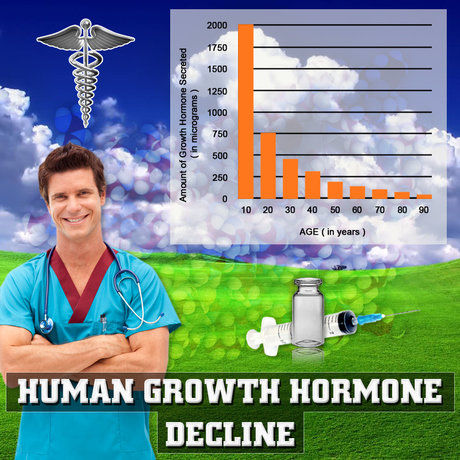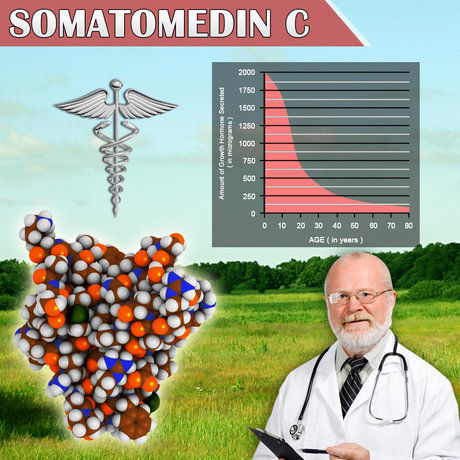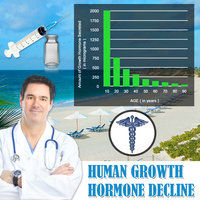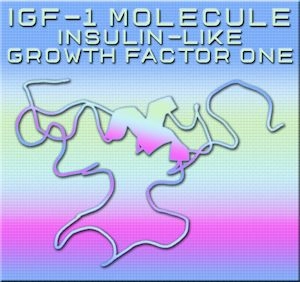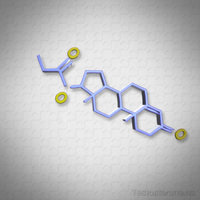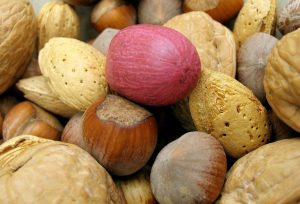 Knowing what different vitamins and minerals can do for you and your health is essential.
Knowing what different vitamins and minerals can do for you and your health is essential.
The more you know, the better you’ll be able to determine which supplements are right for you regarding your health and/or fitness goals.
One vitamin that has many benefits for your health and that you want to ensure you get the recommended amount is vitamin E or alpha-tocopherol.
Fast Facts on Vitamin E
There are water-soluble and fat-soluble vitamins, and vitamin E is the fat-soluble type. This means that more of the vitamin will be absorbed if you consume healthy fats with your supplement. Vitamin E comes in several different forms or molecules, but alpha-tocopherol is the only one the human body can readily use.
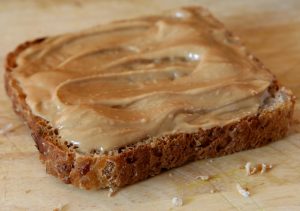 Alpha-tocopherol has many functions in our bodies, including boosting the immune system and the prevention of clots in the arteries of our hearts.
Alpha-tocopherol has many functions in our bodies, including boosting the immune system and the prevention of clots in the arteries of our hearts.
In addition, vitamin E is a potent antioxidant. All antioxidants are vital to reacting with free radicals and disabling them. Free radicals are typically known for causing premature aging (causing wrinkles and saggy skin).
Still, they cause even worse damage than that, damaging cells and DNA and contributing to atherosclerosis (clogged arteries). Free radicals are essentially loose electrons, not attached to an atom anymore, flying around the body and causing damage to anything in their path: cancer, vision loss, and other chronic conditions are also byproducts of free radical damage.
It’s terrific that we have so many antioxidants found in healthy foods that combat these horrible free radicals, including vitamin E! Vitamin E can literally stop the production of free radical cells entirely.
 Signs of a Vitamin E Deficiency
Signs of a Vitamin E Deficiency
Because many Americans are not eating as they should, vitamin deficiencies are becoming more commonplace these days.
They are usually quite rare. Some people with digestive issues, such as cystic fibrosis, celiac disease, or pancreatitis, do not absorb the fat from food very well. A vitamin E deficiency can result.
- Retinopathy: The retina of the eyes becomes damaged with vision loss
- Ataxia: Loss of control of body movements
- Peripheral neuropathy: Peripheral nerve damage (feet, hands); this can eventually lead to weakness and pain
- Lowered immune system
Foods High in Vitamin E
Vitamin E is mainly found in plant foods, such as oils, nuts, seeds, etc.
- sunflower, safflower, and soybean oil
- sunflower seeds
- almonds
- peanuts
- pumpkin
- leafy greens (collard, spinach, beet greens)
- asparagus
- mangos
- avocados
- red bell peppers
As you can see, this is a decent list of food items that I am sure anyone can find something that they like to eat, giving them enough vitamin E for proper health.
The Recommended Dietary Allowance (RDA) for alpha-tocopherol is 15 milligrams (mg) daily. Lactating women need slightly more, at 19 mg. Most people do not need a vitamin E supplement because our diets supply enough.
In fact, if we consume extra, our liver will store the excess to use over the course of days when vitamin E consumption is less.
 Vitamin E is one vitamin that is not recommended for supplementation. Some research has shown that taking vitamin E to prevent heart disease or cancer in specific individuals can actually cause harm.
Vitamin E is one vitamin that is not recommended for supplementation. Some research has shown that taking vitamin E to prevent heart disease or cancer in specific individuals can actually cause harm.
We recommend speaking to a doctor before taking a vitamin E supplement.
Luckily, getting enough vitamin E in your diet is super easy. Top your toast with avocado, peanut butter, or almond butter instead of butter or mayo.
Dip your apples in almond butter. Add wheat germ to oatmeal, smoothies, or baked goods such as muffins, cakes, or pancakes. Have a spinach salad with sunflower seeds and avocado, and use a salad dressing with sunflower oil. Easy peasy!
References
Contact Us For A Fast And Professional Response

- The Other Aspect of Dieting – Removing Chronic Stressors From Your Life [Last Updated On: February 9th, 2025] [Originally Added On: September 9th, 2020]
- The Flaws of Six Popular Diets [Last Updated On: June 6th, 2025] [Originally Added On: September 20th, 2020]
- Purchase Sermorelin Acetate Injections Online [Last Updated On: February 8th, 2025] [Originally Added On: September 23rd, 2020]
- Eating Right On a Low-Glycemic Diet [Last Updated On: April 20th, 2025] [Originally Added On: October 1st, 2020]
- The Benefits of Intermittent Fasting [Last Updated On: May 16th, 2025] [Originally Added On: October 2nd, 2020]
- Eat Healthier with White Flour Alternatives [Last Updated On: August 26th, 2025] [Originally Added On: October 3rd, 2020]
- Ten Common Contributors to Obesity that Make it Hard to Lose Weight [Last Updated On: March 5th, 2025] [Originally Added On: October 4th, 2020]
- How Can Sermorelin Enhance Your Life? Losing Weight and Battling Premature Aging With Sermorelin [Last Updated On: April 1st, 2025] [Originally Added On: October 5th, 2020]
- Benefits and Risks of HGH Therapy: 2018 Update [Last Updated On: April 15th, 2025] [Originally Added On: October 6th, 2020]
- Have You Heard About the 21st Century Breakthroughs in Hormone Replacement Therapy? [Last Updated On: September 16th, 2025] [Originally Added On: October 7th, 2020]
- The Importance of Omega-3 Fatty Acids [Last Updated On: June 4th, 2025] [Originally Added On: October 8th, 2020]
- The Relationship Among Testosterone, Obesity, and Alzheimer's Disease [Last Updated On: August 25th, 2025] [Originally Added On: October 9th, 2020]
- Major Alzheimer's Risk To Continued Sleep Deprivation [Last Updated On: April 29th, 2025] [Originally Added On: October 10th, 2020]
- Should You Choose the Ketogenic Diet? [Last Updated On: May 7th, 2025] [Originally Added On: October 13th, 2020]
- HGH and Insulin: The Primary Agents of Energy Bio-Availability [Last Updated On: March 24th, 2025] [Originally Added On: October 14th, 2020]
- How Can Women Maximize HGH Production? [Last Updated On: April 5th, 2025] [Originally Added On: October 18th, 2020]
- Micro Nutrients Versus Macro Nutrients [Last Updated On: January 11th, 2025] [Originally Added On: November 4th, 2020]
- Some of the most effective Weight Loss Injection and Diet Injection Programs [Last Updated On: June 10th, 2025] [Originally Added On: November 6th, 2020]
- Information About Chelation Therapy [Last Updated On: April 9th, 2025] [Originally Added On: November 9th, 2020]
- Seven Ways to Help You Burn Calories Faster and More Effectively [Last Updated On: March 28th, 2025] [Originally Added On: January 21st, 2021]
- Don’t Eat These Foods When Taking Sermorelin Acetate for HGH Deficiency [Last Updated On: February 14th, 2025] [Originally Added On: February 3rd, 2021]
- Understanding Aerobic vs. Anaerobic Exercise [Last Updated On: May 13th, 2025] [Originally Added On: March 4th, 2021]
- Naturally Losing Weight with Lifestyle Changes Keeps the Weight Off for Good [Last Updated On: May 4th, 2025] [Originally Added On: March 27th, 2021]
- The Health Benefits of the Amazing Strawberry [Last Updated On: February 9th, 2025] [Originally Added On: May 8th, 2021]
- Need Better Sleep? Try Eating Pistachios Before Bed! [Last Updated On: January 21st, 2025] [Originally Added On: February 16th, 2022]
- Three Kinds of Body Fat and How They Impact Your Health [Last Updated On: August 12th, 2025] [Originally Added On: April 12th, 2022]
- Pistachios: You’re Not Nuts [Last Updated On: October 7th, 2025] [Originally Added On: August 3rd, 2022]
- 7 Surprising Things That Mess With Your Hormones [Last Updated On: February 26th, 2025] [Originally Added On: September 5th, 2022]
- Adding Cranberries to Your Diet can Really Add Zest – and Health – to Your Life. [Last Updated On: September 27th, 2025] [Originally Added On: January 10th, 2023]
- Raspberries – Delicious Portal to Shining Good Health [Last Updated On: October 1st, 2025] [Originally Added On: January 18th, 2023]
- Study Shows Cialis and Viagra Users have 25% Lower Early Death Rates [Last Updated On: March 14th, 2025] [Originally Added On: February 19th, 2023]
- Introduction: Understanding the Multifaceted Nature of Obesity [Last Updated On: March 2nd, 2025] [Originally Added On: March 2nd, 2025]

